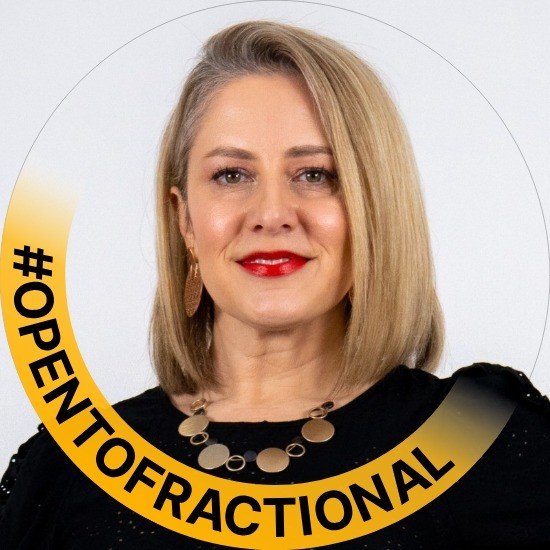The Rise of Fractional Leadership: A Game-Changer for the Real Estate Industry
After years of running an agency model helping businesses go to market and build brand loyalty, I've recently pivoted toward consulting work. This shift wasn't just about streamlining operations, I saw AI rapidly transforming services my agency once provided, from content creation to SEO research. Beyond adapting to technological change, I missed the satisfaction of personally solving client problems rather than managing a team to do it. That's why my recent conversation with fractional leadership expert Laura O'Connor resonated so deeply with me. Her insights into bringing experienced executives on board part-time offer a fresh perspective on leadership that aligns with what I'm seeking – the opportunity to roll up my sleeves and deliver direct value to clients without the overhead of a traditional agency.
"Unlike full-time executives, fractional leaders are unencumbered by the need to maintain long-term alliances or navigate delicate internal relationships, allowing them to identify and recommend necessary changes more decisively."
Laura O’Connor
Why Fractional Leadership, Why Now?
When I spoke with Laura O'Connor, founder of Let Go Coco (Consultants Collaborative) and an expert in fractional leadership, I was struck by her comprehensive research. After leaving her corporate role in October 2024, she invested 90 days speaking with over 100 industry professionals to understand what's really happening in real estate.
Her research identified three key forces reshaping our industry:
Consolidation is accelerating - Companies are merging faster than ever before
AI is changing everything - We're all trying to figure out how to integrate it meaningfully
The market is compressed - We're experiencing sluggish sales, widespread layoffs (especially in PropTech), and an aging leadership population
As Laura explained it, "When I put all those things together, what I realized was that this is the perfect, most opportune time for our industry to start exploring fractional leadership."
The Changing Nature of Work
This shift didn't happen in isolation. We’ve witnessed how the very nature of work has transformed:
Think about how virtual assistants started with individual agents and now support entire brokerages
Remember when working remotely seemed impossible? The pandemic changed that overnight
The gig economy isn't slowing down - it's projected to reach about 28 million workers
Global talent pools are expanding, with estimates pointing to 8.4 million workers by 2028
I love how Laura framed it: "It's natural that these same big movements happening at different layers in consulting and assistant-level roles are going to move up to the executive level." This evolution makes perfect sense when you've been in the trenches of helping businesses find their market fit.
Beyond Consulting: What Makes Fractional Leadership Different
One of the most valuable insights Laura shared was the critical distinction between fractional leadership and consulting. As someone who has primarily operated as a consultant, this distinction really made me reconsider opportunities I may have declined in the past.
Laura explained that unlike consultants who typically handle specific projects with defined parameters and end dates, fractional executives become integrated team members who can scale their involvement up or down based on organizational needs.
"If you're going to invest this time to have me get to know all of your internal processes and team members and go that deep, it doesn't benefit you to have an end date," Laura pointed out. This arrangement offers continuity without waste.
I found myself nodding along as she described how fractional executives might scale back to as little as five hours monthly during leaner times, but the organization doesn't lose that hard-won institutional knowledge. Having previously turned down fractional CMO roles because I was focused on scaling my agency, I'm now seeing how this approach aligns perfectly with my desire to work directly on solving clients' problems rather than managing a team to do it for me.
Why Companies Resist (And Why They Shouldn't)
During our conversation, Laura identified several reasons why companies often resist the fractional leadership model, despite its advantages:
"We'd be investing in someone who isn't fully ours" - Organizations worry about onboarding someone who won't be 100% dedicated to them.
"We don't know how to manage part-time executives" - Many leaders struggle to clearly articulate what they need from someone with limited hours.
"We're already overwhelmed" - According to Laura, a recent study found that 70% of respondents believe executives aren't equipped to develop mid-level leaders, while 75% of managers already feel overwhelmed by their current workload.
What these objections miss, Laura explained, is that fractional executives typically bring 10-20 years of experience and require minimal handholding. "They're going to come in and say, 'Give me this now. Give me access to this person.' They're driving that ship, and they're creating the playbook for you."
As someone who has seen firsthand how AI is transforming traditional marketing services, I immediately recognized the parallel with what Laura was describing – both are about adapting to deliver more targeted value with greater efficiency. Where I'm using technology to augment my capabilities, fractional leadership uses flexible engagement models to deliver executive expertise when and where it's most needed.
The Unmatched Advantage: Freedom from Office Politics
The most compelling point Laura made during our conversation centered on the objectivity that fractional leaders bring to their roles. "Unlike full-time executives, fractional leaders are unencumbered by the need to maintain long-term alliances or navigate delicate internal relationships, allowing them to identify and recommend necessary changes more decisively."
This insight deeply resonated with me. As I've moved between consulting engagements over the years, I've often been invited to join client teams permanently. While flattering, I've noticed that when I become an internal employee, my calendar quickly fills with meetings that don't directly contribute to solving the core problems I was brought in to address. The politics and red tape that come with employment status often dilute the very expertise clients initially valued.
Laura's explanation of how fractional leadership preserves the objectivity and focus of an external perspective while building the deep organizational knowledge of an internal team member struck me as the best of both worlds – something I hadn't fully appreciated before our conversation.
The Hidden Cost of Layoffs vs. Flexible Leadership
Laura shared compelling research that quantifies the damage done by the real estate industry's common cycle of hiring during boom times and laying off during downturns. According to Harvard Business Review data she cited, after layoffs:
Employee pride and willingness to recommend the company drops by 10%
Motivation plummets by over 15%
Present commitment falls by 25%
Future commitment declines by 25%
"Think about a 25% drop in how committed your people are after a layoff. And then you do another one, and then you do another one," Laura emphasized.
This research highlights how fractional leadership offers something truly valuable - the ability to scale expertise up or down without devastating company culture. As someone who has worked with numerous companies on brand loyalty, these statistics made me reflect on how many organizations damage their internal brand through layoff cycles that could be avoided with more flexible leadership structures.
A Model for Continuous Transformation
Laura cited a striking statistic: 87% of HR leaders agree that shifting business needs require continuous transformation. The question isn't whether your organization will need to transform, but how effectively you'll manage that transformation.
"We see that in real estate so much," Laura explained. "Every few months, there's something crazy and new in the news, and these companies—from brokerages to big brands to PropTech to the VC funds backing them—they all need to adjust and adapt to all these things flying at us."
In Laura's view, this reality makes fractional leadership particularly valuable. Rather than expecting current executives to somehow stretch beyond their core competencies every time a new challenge emerges, organizations can bring in specialized expertise precisely when needed.
This insight mirrors my own recent pivot. As I've watched AI transform content creation and marketing services, I've recognized that staying valuable means focusing on where I can make the greatest direct impact for clients, tackling the projects they lack bandwidth and/or the personal connections and relationships to handle internally. Both approaches prioritize delivering expert solutions with maximum efficiency.
The Future of Fractional Leadership in Real Estate
Laura outlined several exciting applications of fractional leadership taking shape in real estate:
Turnaround situations - Laura described how fractional executives can step into vacancies, build operational playbooks, and then transition to advisory roles once permanent leaders are in place. This creates a smooth handoff rather than the typical chaos of leadership transitions.
Cross-pollination of expertise - The fractional model lets companies access talent with diverse backgrounds they might never consider for permanent roles, bringing fresh perspectives that can break through entrenched industry thinking.
Team-based solutions - Laura mentioned The Entrepreneur's Boardroom, which assembles teams of fractional executives who tackle complex challenges together. "We're bringing in an entire team for less than what that one person's cost was," she explained.
What This Means for Us
As I've pivoted away from the agency model in response to AI's transformation of traditional marketing services, Laura's insights on fractional leadership have opened my eyes to opportunities I previously overlooked. What initially seemed like a stepping-stone between full-time roles is revealing itself as a powerful model with advantages for both executives and the companies they serve.
For experienced professionals like me who crave the satisfaction of directly solving client problems rather than managing teams, fractional leadership creates a path to leverage specialized skills while maintaining the autonomy to select meaningful work. For companies navigating uncertain times, it offers access to seasoned guidance without breaking the bank.
After speaking with Laura, I'm convinced that fractional leadership isn't just an alternative to traditional employment – in many cases, it's a more efficient way to deliver value. It lets experts like me focus on the work we love: rolling up our sleeves and tackling the projects and problems clients don't have bandwidth to handle internally. As the real estate industry continues evolving, this model provides exactly the kind of agility and specialized expertise organizations need to thrive.
For more detailed insights on fractional leadership in real estate, I encourage you to read Laura O'Connor's comprehensive white paper https://sites.google.com/view/let-go-coco/white-paper



